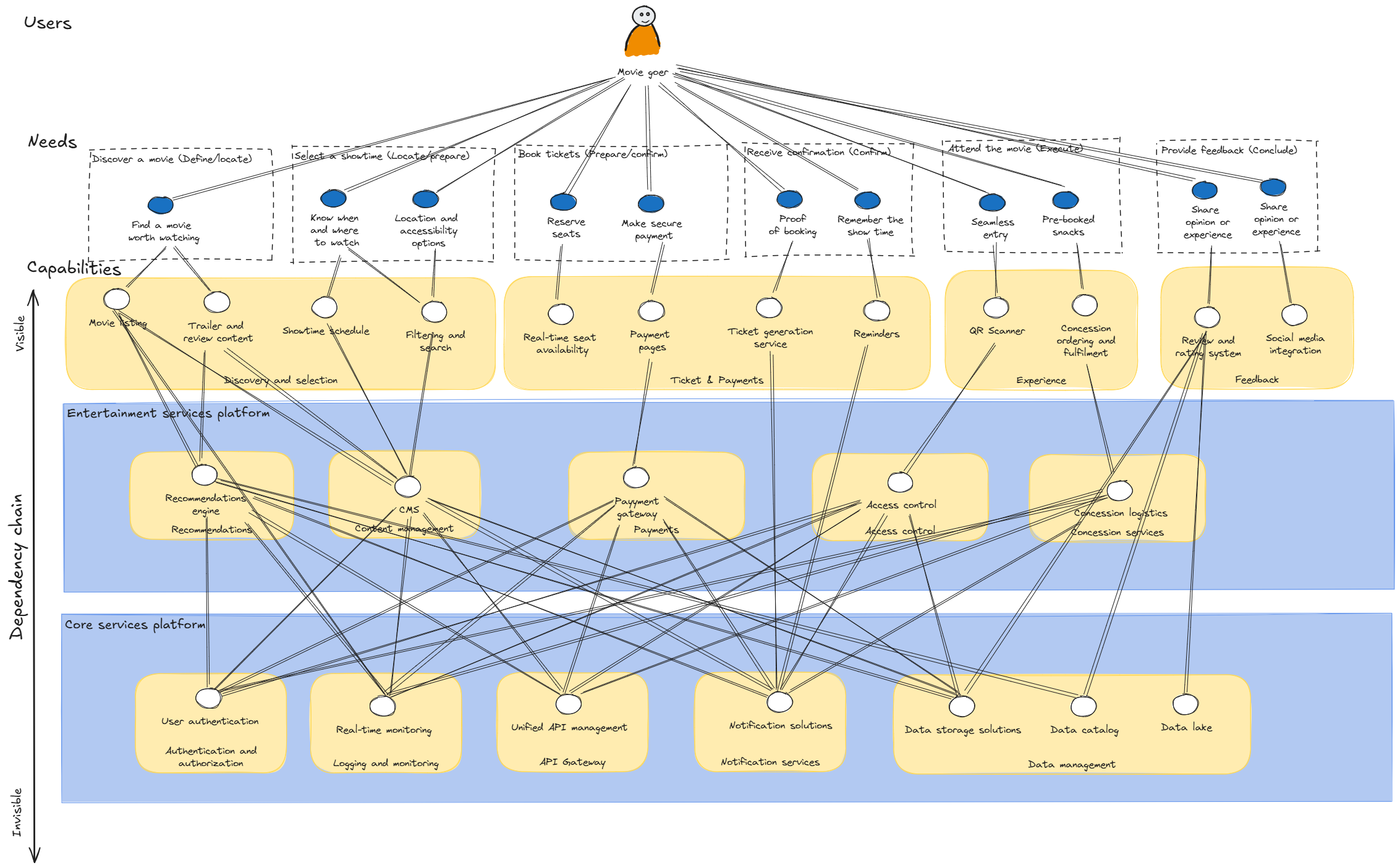When Product and Engineering teams don’t align, progress can grind to a halt.
You can avoid this with a simple, visual and accessible approach…

Welcome to User Needs Mapping, an approach to bridge the gap,
so your teams can collaborate more effectively and deliver value faster.
Why is delivery taking so long? Let’s fix it.
Why does it feel like product and engineering are always out of sync? Product demands new features yesterday, engineering struggles to keep up, and your users are left waiting. These silos create bottlenecks, delays, and frustration. The good news? It doesn’t have to be this way.


Complexity is slowing you down. Here's how to simplify.
Your organization is made up of people, processes, and technology (a socio-technical system). As the organization grows, it becomes more complex. The technical systems become larger and more processes are introduced to try to manage dependencies between the systems but we often don’t pay enough attention to the people part of the overall system.
Stay ahead in a world of constant change.
Your Customer, Market and Technology are the three main drivers of value in your organization. They are continuously evolving and the rate of change is only increasing. Organizations need to be able to respond to these changes quickly and effectively. This means being able to sense when to change i.e. spot the signals and then be able to adapt quickly by ensuring the right people are aligned around the flow of value required to meet those changing needs.


The journey to success
Disconnected Product and Engineering teams lead to silos, delays, and frustration. We need to align those teams through conversations about user needs and how the work they do aligns with the organizations purpose. This is where User Needs Mapping comes in. It is a practical, accessible, and scalable approach that can be used by teams of any size, with or without prior experience of techniques like Wardley Mapping or Domain-Driven Design.
With User Needs Mapping we seek to start (and continue) conversations between product and engineering teams that align them around the needs of the users they serving. We do this by visualizing the value chain which helps teams to understand the flow of value through the organization and then determine how they might best align to deliver that value most effectively.
What do the experts say?
Real-world results
Transforming organizations, one map at a time.
 Passenger Case Study: Discover how a mobile ticketing company used User Needs Mapping to disccover value streams and align their teams for optimal delivery. Read the story.
Passenger Case Study: Discover how a mobile ticketing company used User Needs Mapping to disccover value streams and align their teams for optimal delivery. Read the story.‘User Needs Mapping has helped us to identify previously unseen ways of organizing our teams and was a valuable part of applying Team Topologies at Passenger’ Tom Quay, CEO, Passenger
User Needs Mapping has become a go-to technique used within the Team Topologies community.
What do some of our practitioners say?
Resources to get started
Here is a talk from Fast Flow Conf 2023 gives a great overview of User Needs Mapping.
If you are interested in learning more, take a look at the resources:
Step-by-step guide to User Needs Mapping: Learn how to use User Needs Mapping to align your teams around the needs of your users. Read the guide.
Common challenges and how to overcome them: See how organizations have overcome common challenges with User Needs Mapping. Read the article.
Want to run a workshop at your organization?
If you would like to explore running a workshop at your organization, take a look at our workshop page for more information.
Learn more about workshopsGet started today
Ready to align your teams and deliver faster? Start with User Needs Mapping.
Start Mapping Now or Get in touch if you need some help.




